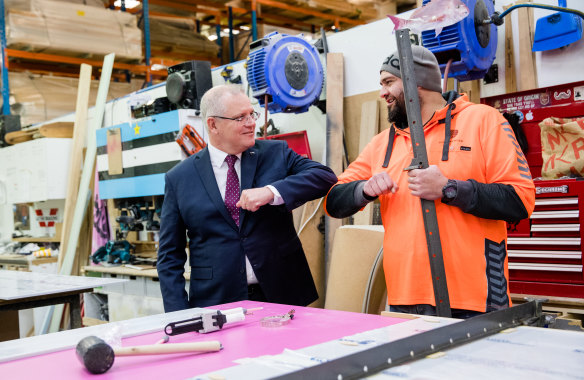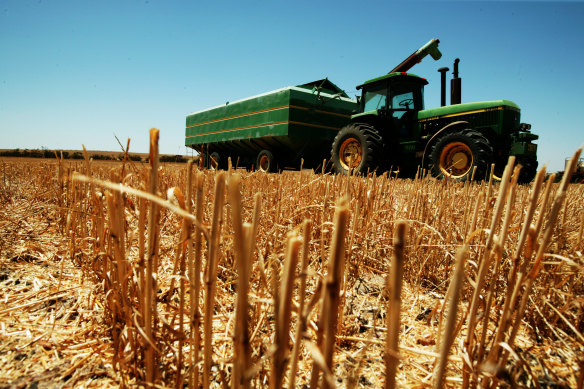- Exclusive
- Politics
- Federal
- Coronavirus pandemic
This was published 3 years ago
Most firms not planning to use instant asset write-off
By Shane Wright
More than half of the nation's businesses do not plan to use the Morrison government's increased instant asset write-off scheme to buy capital equipment — a measure designed to help drag them out of the recession.
A survey by MYOB has revealed that with just days before the cut-off for firms to make purchases under the $3.2 billion scheme, many businesses are still too worried about the economic future to sink their cash into major expansions.

Scott Morrison talked up government's program at a Sydney business in July.
Under the scheme, businesses with an annual turnover of up to $500 million can immediately write off for tax purposes assets worth up to $150,000. It forms a key part of the government's multi-pronged effort to boost business investment out of the recession.
The scheme was expected to cost $2.4 billion this year and another $800 million in 2021-22 although the net cost over the next four years is $1 billion.
MYOB, which surveyed 1000 businesses, found just 30 per cent said they were planning to use the instant asset write-off to increase capital spending this year. Fifty-one per cent said they would not while another 19 per cent were unsure.
Across the states, 36 per cent of firms in NSW plan to use the write-off while half say they will not. In Victoria, just 27 per cent plan to use it while in Queensland, just one in five will take advantage of the scheme.
MYOB chief economist Jon Manning said the low take-up was a surprise given the upfront tax advantages of the scheme.
He said demand could increase as the economy improved.
"If the economy improves out of the COVID period then we could see more demand in this area. But maybe the asset write-off is not optimal for new businesses which are likely to be in the digital area," he said.
MYOB found younger firms were more likely to use the scheme. A third of start-ups and 47 per cent of those firms operating between two and five years said they would take advantage of the write-off.
But among firms that are at least 10 years old, the rate collapsed to just 15 per cent.

Farmers were expected to take advantage of the instant asset write-off to help bring in a bumper post-drought wheat crop.Credit: Erin Jonasson
When the government increased the write-off to $150,000 in early March as part of its initial stimulus response to the pandemic, Prime Minister Scott Morrison said the farming sector would be able to use the scheme to take advantage of recent drought-breaking rains.
But the survey found the lowest take-up rate of the write-off was in rural areas, with just 20 per cent of respondents planning to increase their capital spending because of the scheme.
The highest proportion of businesses saying they would not use the scheme, at 58 per cent, was in rural Australia.
Manufacturing and finance firms were the most likely to use the write-off, at 41 per cent, but even in these sectors, more businesses said they would not use it to expand their capital base.
Retail (23 per cent) and transport (22 per cent) had the lowest proportion of firms saying they would use the program.
Of those firms planning to use it, almost a third say they would spend between $100,000 and $150,000 while another 29 per cent would spend between $50,000 and $100,000.
Sole traders and firms with between five and 19 staff are the most likely to use the scheme at around a third each, while just 16 per cent of businesses with between 19 and 199 staff will use it.